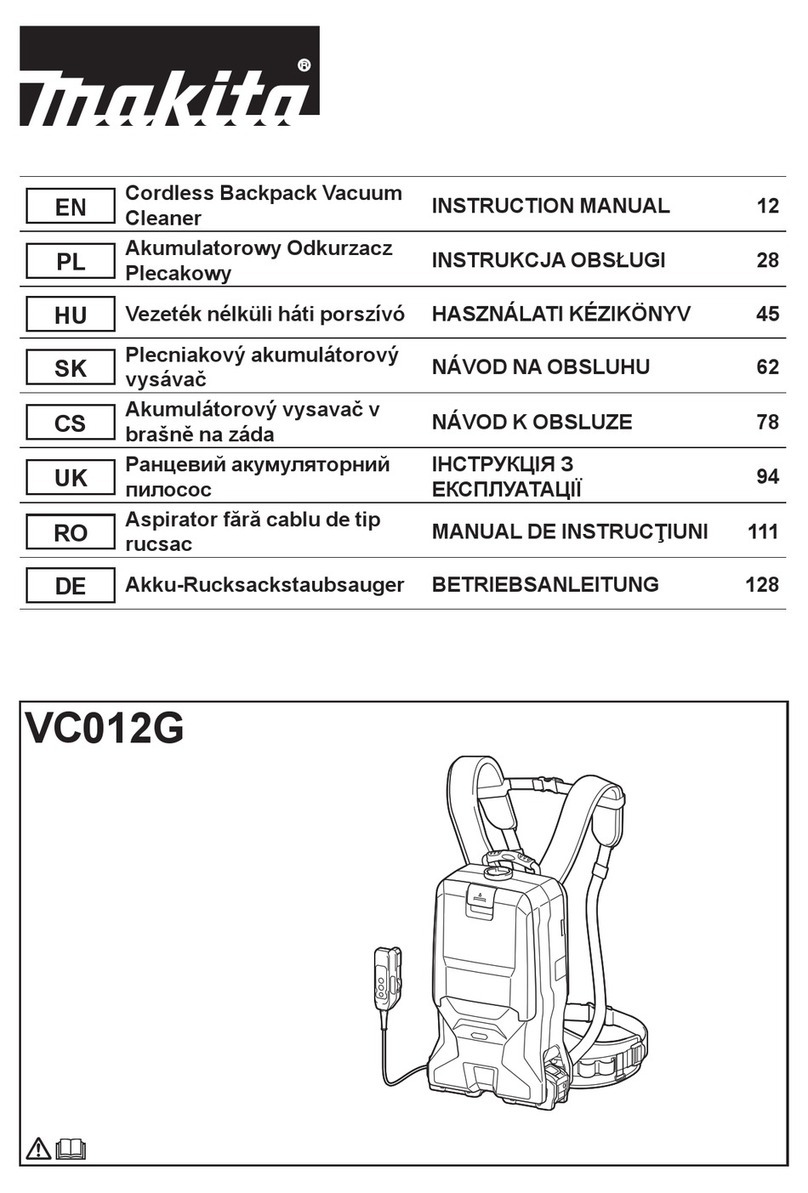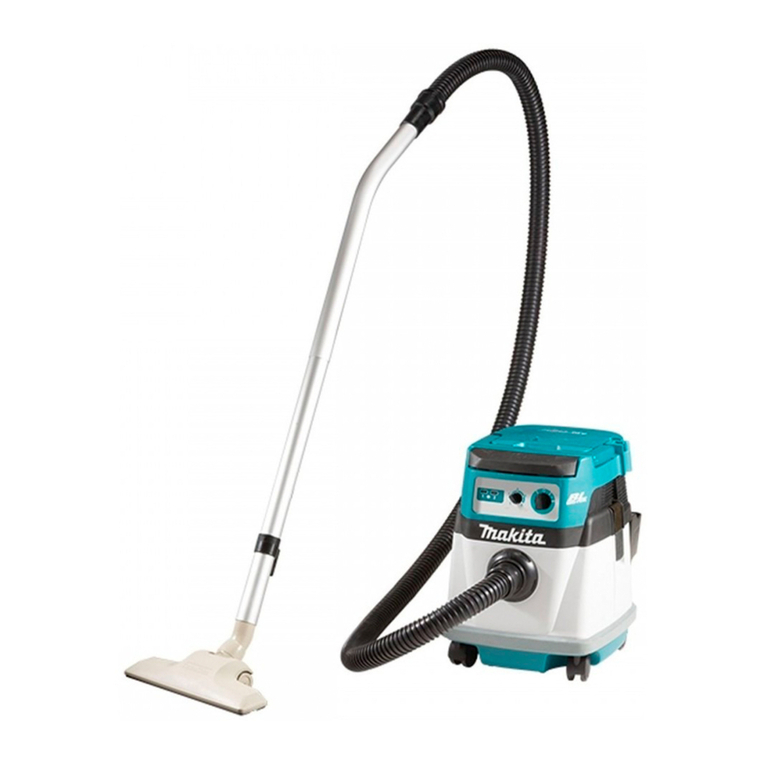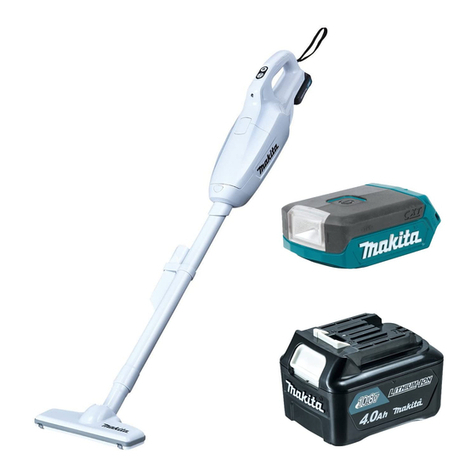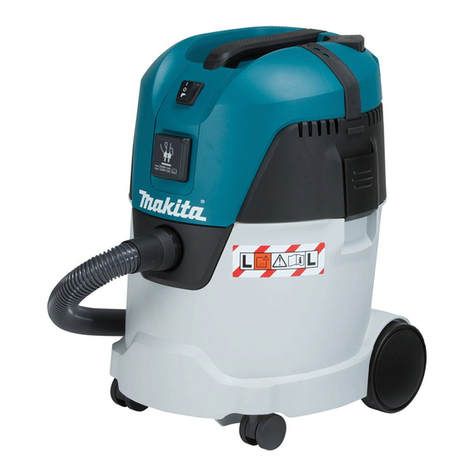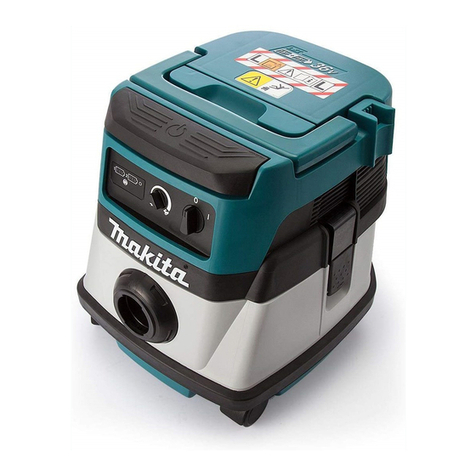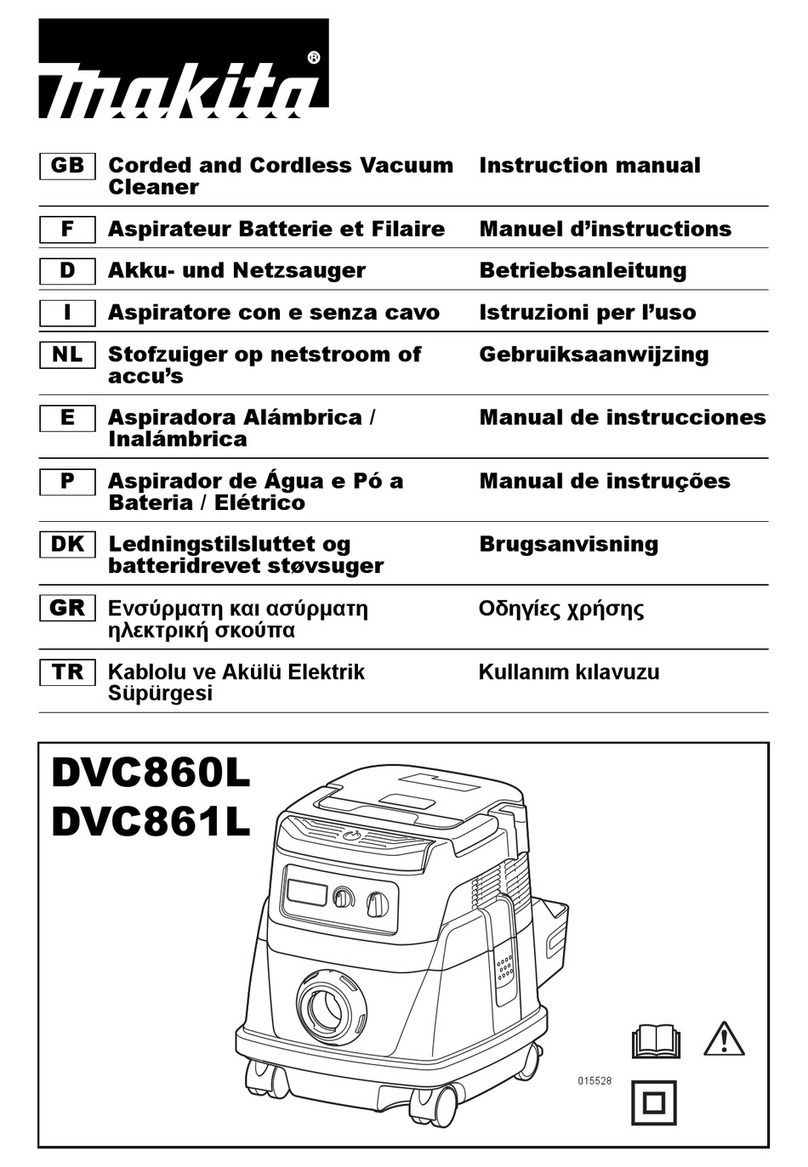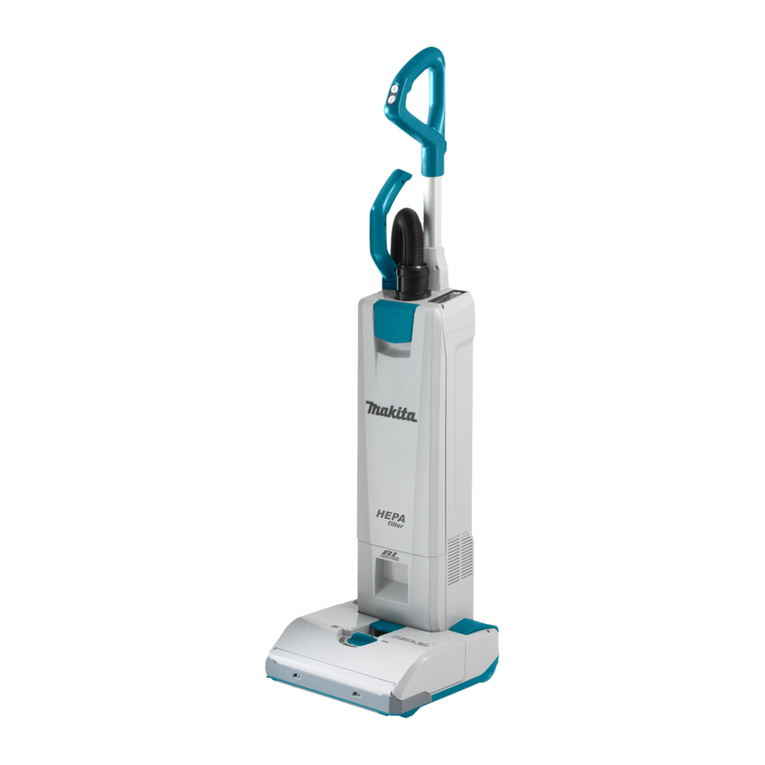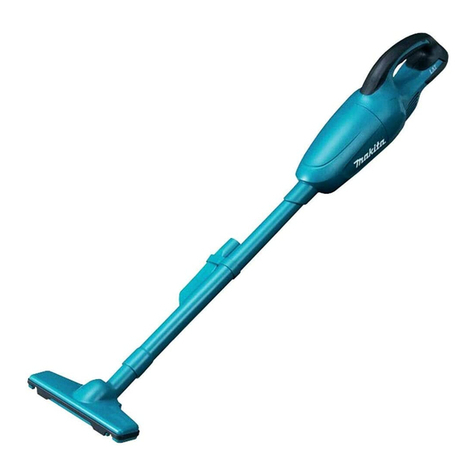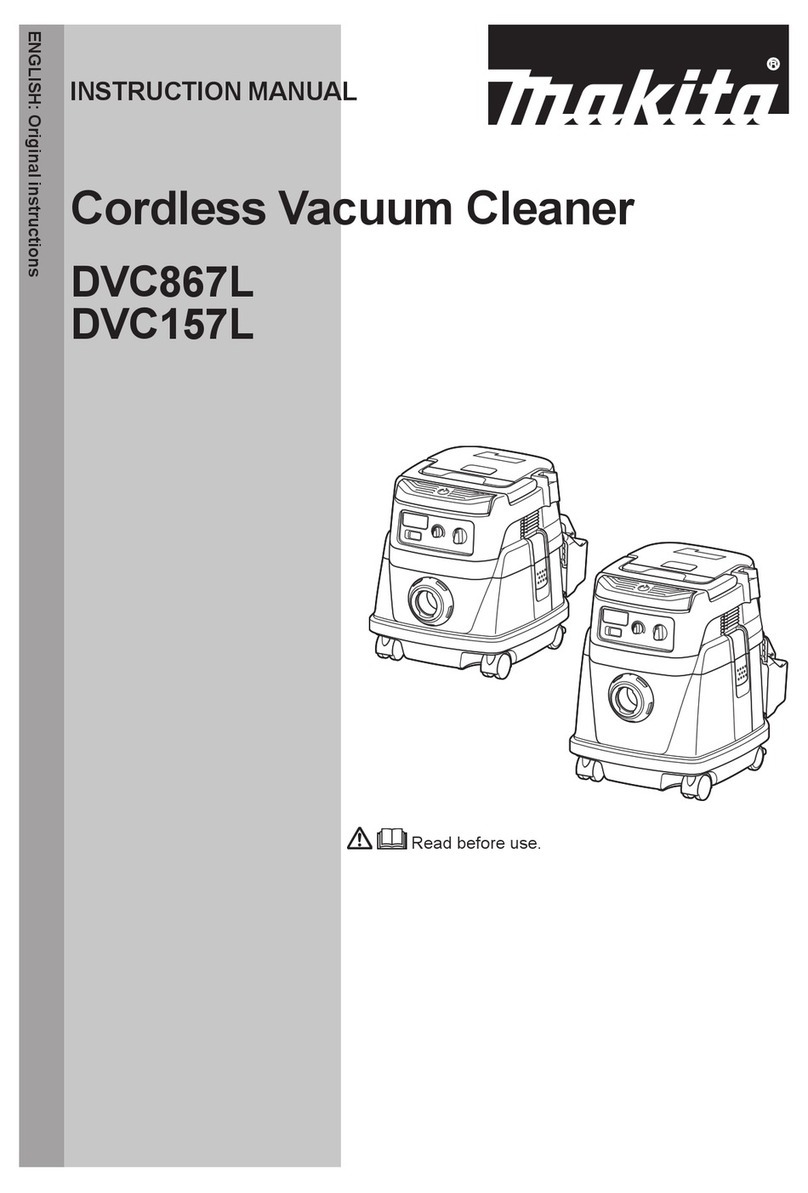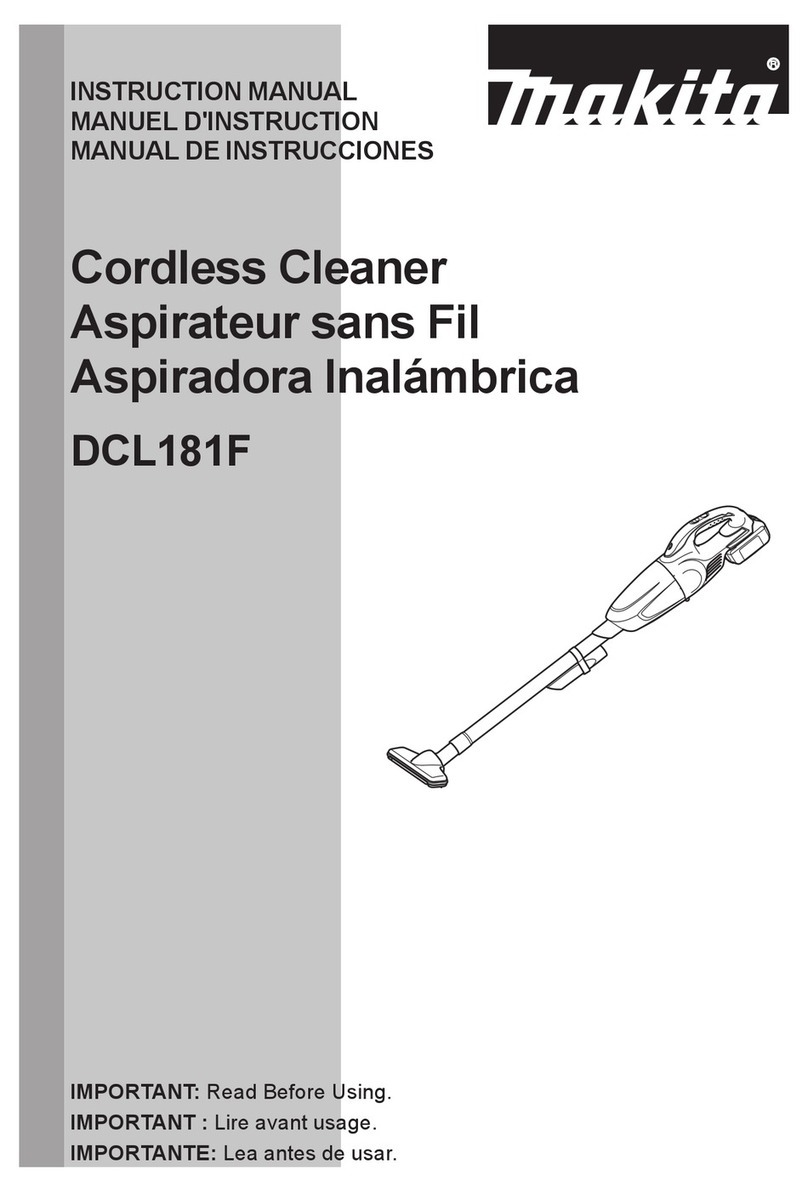
3ENGLISH
WARNING
To reduce the risk of re, electric shock
or injury:
1. Do not leave appliance when
plugged in or battery tted. Unplug
from outlet and remove battery
from appliance when not in use and
before servicing.
2. Do not allow to be used as a toy.
Close attention is necessary when
used by or near children.
3. Use only as described in this man-
ual. Use only manufacturer's recom-
mended attachments.
4. Do not use with damaged cord, plug
or battery. If appliance is not work-
ing as it should, has been dropped,
damaged, left outdoors, or dropped
into water, return it to a service
center.
5. Do not pull or carry by cord, use
cord as a handle, close a door on
cord, or pull cord around sharp
edges or corners. Do not run appli-
ance over cord. Keep cord away
from heated surfaces.
6. Do not unplug by pulling on cord. To
unplug, grasp the plug, not the cord.
7. Do not handle plug or appliance
with wet hands.
8. Do not put any object into open-
ings. Do not use with any opening
blocked; keep free of dust, lint, hair,
and anything that may reduce air
ow.
9. Keep hair, loose clothing, ngers,
and all parts of body away from
openings and moving parts.
10. Turn o all controls before unplug-
ging or removing the battery
cartridge.
11. Use extra care when cleaning on
stairs.
12. Do not use to pick up ammable or
combustible liquids, such as gaso-
line, or use in areas where they may
be present.
13. Use only the charger supplied by
the manufacturer to recharge.
14. Do not pick up anything that is burn-
ing or smoking, such as cigarettes,
matches, or hot ashes.
15. This appliance is provided with
double insulation. Use only identical
replacement parts. See instructions
for Servicing of Double-Insulated
Appliances.
16. Do not use without lters in
place. Replace a damaged lter
immediately.
17. Do not charge the battery outdoors.
18. (For the powder lter models.) Do not
use on wet surfaces. Do not expose
to rain. Store indoors.
19. (For the cloth lter models.) Do not
expose to rain. Store indoors.
20. Always install oat before any wet
pick-up operation.
21. Do not use the cleaner as a stool or
work bench. The machine may fall
down and may result in personal
injury.
22. Do not vacuum the following:
• Flammable liquid (kerosene,
gasoline, solvents such as ben-
zine, thinner, etc.)
• Hot substances that are burn-
ing or smoking (cigarettes,
matches, incense sticks, can-
dles, hot ashes), sparks and
metal dust generated by cutting
or grinding metal, etc.
• Flammable material (toner,
paint, spray, etc.)
• Foam like carpet cleaning agent,
etc. (they may cause explosion
or re)
• Explosive or pyrophoric sub-
stances (nitroglycerin, alumi-
num, magnesium, titanium, zinc,
red phosphorus, yellow phos-
phorus, celluloid, etc. and their
dust, gas or steam)
• Sharp objects (glass, cutlery,
wood splinter, metal, stone, nail,
razor, push pin, etc.)
• Solidifying and conductive
ne powder (metal or carbon
powder)


